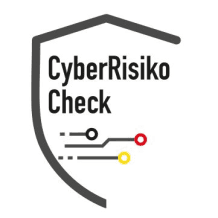Reverse Engineering is a concept that has gained significance in both the technological and industrial worlds. In a time when innovation and continuous improvement are central elements of success, Reverse Engineering offers the opportunity to analyze existing products, systems, and processes to gain new insights and derive improvements. This article provides an in-depth look at the topic of Reverse Engineering, its origins, methods, challenges, and various application areas. Basic questions are answered: What is Reverse Engineering? How does it work? What tools and techniques are used? And why is it so important for modern companies?
Introduction to Reverse Engineering Let's start with a fundamental question: What do we understand by Reverse Engineering? At its core, Reverse Engineering describes the process of breaking down an existing product or system into its components to understand its structure, functioning, and design principles. This method is often applied when only the end product is available, but no detailed documentation or construction drawings exist. The purpose can be diverse - from error analysis through optimization and redevelopment to checking safety aspects.
Historical Context and Development The origins of Reverse Engineering can be traced back to the beginnings of technology. Historically, early forms of Reverse Engineering emerged at times when mechanical devices and machines were not standardized and documented. Engineers often had to develop their own analog methods to understand complex systems. Over time, this method also gained importance in software development as developers began to analyze the functionality of foreign software products in order to improve existing technologies or identify security gaps.
W-Questions on the Topic of Reverse Engineering
To deepen understanding, let’s consider some essential W-questions:
• What is Reverse Engineering and what goals does it pursue?
• How can the process of Reverse Engineering be divided into individual steps?
• What tools and techniques are used for the analysis?
• Why is Reverse Engineering indispensable for companies today?
• When and in which areas is Reverse Engineering applied?
Techniques and Tools The process of Reverse Engineering is supported by various methods and tools. Especially in the software world, disassemblers, debuggers, and special analysis tools are used to reconstruct the source code and functionality of programs. In the hardware field, highly advanced measurement techniques, computer-aided three-dimensional scans, and material analyses are often employed.
Disassemblers and Debuggers: These software tools break down the executed program code into machine-readable instructions. This allows engineers to trace how a program operates internally. The precise analysis of binary code makes it possible to identify weaknesses and propose improvements.
Physical Analyses: In devices and hardware products, measurement procedures such as X-ray inspection, microscopy, and material analyses are used. These techniques help understand the material and manufacturing methods that were used to create a product.
CAD Reconstructions: In industrial Reverse Engineering, computer-aided systems are often used to create digital models of mechanical parts. These models serve as a basis for further optimization or even for the reproduction and modification of the parts.
Application Areas and Practical Examples Reverse Engineering is used in almost all technical fields. A classic example is software development, where security researchers attempt to analyze malicious code to identify and close security gaps. In the automotive industry, medical technology, and aerospace, these methods also play an important role. Below are some practical application cases:
A. Security Research in IT In the field of IT security, Reverse Engineering is an indispensable tool. It primarily serves to identify vulnerabilities in software programs to minimize attack surfaces and be prepared for cyber attacks. Security analysts utilize Reverse Engineering to examine malware, understand malicious programs, and develop defense strategies. This not only increases the stability of IT systems but also strengthens trust in digital infrastructures.
B. Product Development and Innovation In many industries, such as electronics or mechanical engineering, Reverse Engineering is used to analyze existing products and develop innovative approaches for new products. Companies extract proven design principles and combine them with modern technologies to create market-ready products. This technique enables informed decisions for further development without direct access to original construction drawings.
C. Competitive Analysis Reverse Engineering provides companies with a strategic advantage when it comes to examining competitors' products. By closely analyzing existing technologies and manufacturing processes, companies can improve their own products or develop innovative solutions that set them apart from the competition. The competitive advantage is strengthened through targeted analysis and subsequent optimization.
D. Preservation and Restoration of Historical Technology Reverse Engineering also plays a role in the preservation of historical technology. Museums and collections use this technique to reconstruct and restore old machines or devices. With the help of modern measurement and analysis methods, parts can be replaced or accurately restored. This preserves technical heritage and makes it accessible to a broader audience.
E. Legal Aspects and Ethical Questions With all the advantages that Reverse Engineering offers, legal and ethical questions also arise. How far can analysis be conducted invasively? Where is the line between legitimate identification of technical deficiencies and illegal imitation of technologies? The legal assessment varies from country to country, and often requires a careful balance between promoting innovation and protecting intellectual property. Therefore, companies and analysts must always be aware of existing regulations and ensure that their approach is legally sound.
Methodical Approach in Detail To better understand the entire process of Reverse Engineering, let’s look at the individual methodological steps typically carried out:
Information Gathering: Here, all available data about the product is collected – from technical documentation to user manuals to visual and physical characteristics. This serves as a starting point for further analysis.
Decomposition: The object of investigation is broken down into its components. For software, this is done by disassembling the code; for hardware, through physical dismantling. This step often requires specialized tools and much experience to avoid damaging or misinterpreting relevant components.
Analysis and Reconstruction: In this phase, the individual components are examined and integrated into a complete picture. The goal is to trace the design process, functionality, and specific design decisions. A systematic reconstruction occurs, considering both the quantitative and qualitative aspects of the individual components.
Documentation and Validation: All insights gained are documented in detail. This documentation is important not only for the internal analysis but also serves as a basis for later development decisions, troubleshooting, and innovation processes. Often, the reconstructed functionality is tested in a simulated environment to ensure that all assumptions and modeling are correct.
The Role of Reverse Engineering in Innovation Management Companies also strategically use Reverse Engineering to achieve competitive advantages. Through detailed analyses, they can uncover the weaknesses and strengths of their own products as well as those of competitors. This informational advantage allows targeted investments in research and development to create new, market-leading solutions. In dynamic industries, where technological innovations set the pace, Reverse Engineering is an important tool for recognizing trends early and adapting accordingly.
Case Studies and Success Stories
Several well-known case studies underline the practical value of Reverse Engineering. For example, a large automobile manufacturer reports on a project in which a competitor's vehicle was analyzed in detail to optimize its own model. By understanding the aerodynamic properties, materials, and manufacturing techniques, significant improvements in efficiency and safety were achieved. Similar approaches can be found in aviation, where d
Reverse Engineering in Germany: Current Developments
The significance of reverse engineering in Germany is continuously growing. According to recent studies by the Federal Office for Information Security (BSI), German companies are increasingly affected by cyber threats. The Bitkom association reports that 84% of German companies were victims of cyber attacks in the last two years.
Particularly in the area of reverse engineering, the following trends are evident:
Increasing investments in preventive security measures
Increased awareness of holistic security concepts
Integration of reverse engineering into existing compliance frameworks
EU Compliance and Reverse Engineering
With the introduction of the NIS2 directive and stricter GDPR requirements, German companies must adapt their security strategies. Reverse Engineering plays a central role in fulfilling regulatory requirements.
Important compliance aspects:
Documentation of security measures
Regular review and updating
Proof of effectiveness to regulatory authorities
Practical Implementation in Everyday Business
The integration of reverse engineering into everyday business requires a structured approach. Experience shows that companies benefit from a gradual implementation that considers both technical and organizational aspects.
Think of reverse engineering as an insurance policy for your company: The better prepared you are, the lower the risk of damage from security incidents.
Further Security Measures
For a comprehensive security strategy, you should combine reverse engineering with other security measures:
Vulnerability Management - Systematic vulnerability management
Penetration Testing - Comprehensive security tests
Security Hardening - Employee awareness training
Incident Response Plan - Preparation for security incidents
Conclusion and Next Steps
Reverse Engineering is an essential component of modern cybersecurity. Investing in professional reverse engineering measures pays off in the long run through increased security and compliance with regulations.
Do you want to optimize your security strategy? Our experts are happy to advise you on implementing reverse engineering and other security measures. Contact us for a non-binding initial consultation.
🔒 Act now: Let our experts assess your current security situation
📞 Request a consultation: Schedule a free initial consultation on reverse engineering
📋 Compliance Check: Review your current compliance situation
📌 Related Topics: Cybersecurity, IT security, compliance management, risk assessment




